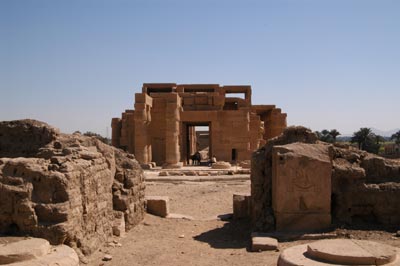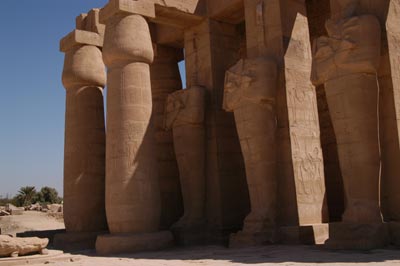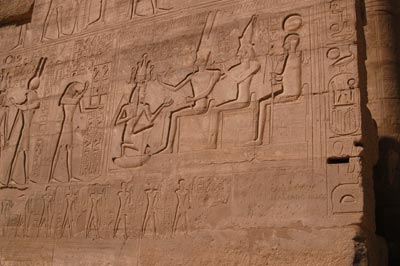










more photos
site details
0700-1800 daily summer
0700-1500 daily winter
relevant links
Ramesseum
The Ramesseum is built on the ruined foundations of an earlier temple of Seti I. He didn't, however, take into account the reason that Seti I's temple had failed -- the yearly inundation of the Nile slowly ate away at the foundations. THis is surprising, as the Ramesseum marks the firs ttime that the great pylons of the temple were bult in stone -- prior to this, they were usually mudbrick. Still, the temple had been abandoned by the 22nd Dynasty and used as a necropolis. By the 29th Dynasty, it was being dismantled for building materials.

CUrrently, the first two pylons have collapsed and only the courtyards remain. The entrance now no longer goes through the ruined pylons but instead through the side of the courtyard, which skewed our ability to "see:" the temple inthe ruins.

The temple faces east, as do all the mortuary temples on the west bank and woul d have been entered through the first pylon, which stands a ways away form the rest of the temple. It was crumbled in an earthquake which destroyed it and the colonnatded hall behind it. This earthquake, in 27 BCE, probably brought down the giant colossus as well.
